SIRT1 Controls Acetaminophen Hepatotoxicity by Modulating Inflammation and Oxidative Stress
- PMID: 29084443
- PMCID: PMC9545809
- DOI: 10.1089/ars.2017.7373
SIRT1 Controls Acetaminophen Hepatotoxicity by Modulating Inflammation and Oxidative Stress
Abstract
Aims: Sirtuin 1 (SIRT1) is a key player in liver physiology and a therapeutic target against hepatic inflammation. We evaluated the role of SIRT1 in the proinflammatory context and oxidative stress during acetaminophen (APAP)-mediated hepatotoxicity.
Results: SIRT1 protein levels decreased in human and mouse livers following APAP overdose. SIRT1-Tg mice maintained higher levels of SIRT1 on APAP injection than wild-type mice and were protected against hepatotoxicity by modulation of antioxidant systems and restrained inflammatory responses, with decreased oxidative stress, proinflammatory cytokine messenger RNA levels, nuclear factor kappa B (NFκB) signaling, and cell death. Mouse hepatocytes stimulated with conditioned medium of APAP-treated macrophages (APAP-CM) showed decreased SIRT1 levels; an effect mimicked by interleukin (IL)1β, an activator of NFκB. This negative modulation was abolished by neutralizing IL1β in APAP-CM or silencing p65-NFκB in hepatocytes. APAP-CM of macrophages from SIRT1-Tg mice failed to downregulate SIRT1 protein levels in hepatocytes. In vivo administration of the NFκB inhibitor BAY 11-7082 preserved SIRT1 levels and protected from APAP-mediated hepatotoxicity.
Innovation: Our work evidenced the unique role of SIRT1 in APAP hepatoprotection by targeting oxidative stress and inflammation.
Conclusion: SIRT1 protein levels are downregulated by IL1β/NFκB signaling in APAP hepatotoxicity, resulting in inflammation and oxidative stress. Thus, maintenance of SIRT1 during APAP overdose by inhibiting NFκB might be clinically relevant. Rebound Track: This work was rejected during standard peer review and rescued by Rebound Peer Review (Antioxid Redox Signal 16:293-296, 2012) with the following serving as open reviewers: Rafael de Cabo, Joaquim Ros, Kalervo Hiltunen, and Neil Kaplowitz. Antioxid. Redox Signal. 28, 1187-1208.
Keywords: SIRT1; antioxidant defense; hepatotoxicity; inflammation; interleukin 1β; oxidative stress; paracetamol.
Conflict of interest statement
No competing financial interests exist.
Figures
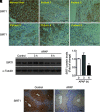
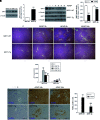

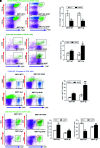
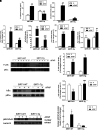
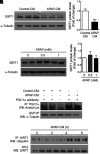
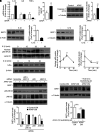

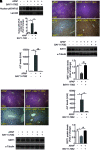

Similar articles
-
Curcuma aromatica Salisb. Protects from Acetaminophen-Induced Hepatotoxicity by Regulating the Sirt1/HO-1 Signaling Pathway.Nutrients. 2023 Feb 4;15(4):808. doi: 10.3390/nu15040808. Nutrients. 2023. PMID: 36839166 Free PMC article.
-
Acetaminophen Responsive miR-19b Modulates SIRT1/Nrf2 Signaling Pathway in Drug-Induced Hepatotoxicity.Toxicol Sci. 2019 Aug 1;170(2):476-488. doi: 10.1093/toxsci/kfz095. Toxicol Sci. 2019. PMID: 31077331
-
Limonin ameliorates acetaminophen-induced hepatotoxicity by activating Nrf2 antioxidative pathway and inhibiting NF-κB inflammatory response via upregulating Sirt1.Phytomedicine. 2020 Apr;69:153211. doi: 10.1016/j.phymed.2020.153211. Epub 2020 Mar 20. Phytomedicine. 2020. PMID: 32259676
-
Autophagy and acetaminophen-induced hepatotoxicity.Arch Toxicol. 2018 Jul;92(7):2153-2161. doi: 10.1007/s00204-018-2237-5. Epub 2018 Jun 6. Arch Toxicol. 2018. PMID: 29876591 Review.
-
Therapeutic Potential of Plants and Plant Derived Phytochemicals against Acetaminophen-Induced Liver Injury.Int J Mol Sci. 2018 Nov 28;19(12):3776. doi: 10.3390/ijms19123776. Int J Mol Sci. 2018. PMID: 30486484 Free PMC article. Review.
Cited by
-
Expression of mitochondrial membrane-linked SAB determines severity of sex-dependent acute liver injury.J Clin Invest. 2019 Dec 2;129(12):5278-5293. doi: 10.1172/JCI128289. J Clin Invest. 2019. PMID: 31487267 Free PMC article.
-
MicroRNA‑217 inhibition relieves cerebral ischemia/reperfusion injury by targeting SIRT1.Mol Med Rep. 2019 Aug;20(2):1221-1229. doi: 10.3892/mmr.2019.10317. Epub 2019 May 31. Mol Med Rep. 2019. PMID: 31173187 Free PMC article.
-
Diploid Hepatocytes Resist Acetaminophen-Induced Liver Injury Through Suppressed JNK Signaling.bioRxiv [Preprint]. 2025 Aug 2:2025.07.31.667940. doi: 10.1101/2025.07.31.667940. bioRxiv. 2025. PMID: 40766462 Free PMC article. Preprint.
-
Ethanol Extract of Rosa rugosa Ameliorates Acetaminophen-Induced Liver Injury via Upregulating Sirt1 and Subsequent Potentiation of LKB1/AMPK/Nrf2 Cascade in Hepatocytes.Molecules. 2023 Oct 28;28(21):7307. doi: 10.3390/molecules28217307. Molecules. 2023. PMID: 37959727 Free PMC article.
-
Nanocurcumin Improves Lipid Status, Oxidative Stress, and Function of the Liver in Aluminium Phosphide-Induced Toxicity: Cellular and Molecular Mechanisms.Biomed Res Int. 2022 Sep 12;2022:7659765. doi: 10.1155/2022/7659765. eCollection 2022. Biomed Res Int. 2022. PMID: 36132078 Free PMC article.
References
-
- Antoniades CG, Quaglia A, Taams LS, Mitry RR, Hussain M, Abeles R, Possamai LA, Bruce M, McPhail M, Starling C, Wagner B, Barnardo A, Pomplun S, Auzinger G, Bernal W, Heaton N, Vergani D, Thursz MR, and Wendon J. Source and characterization of hepatic macrophages in acetaminophen-induced acute liver failure in humans. Hepatology 56: 735–746, 2012. - PubMed
-
- Barbieri SS, Amadio P, Gianellini S, Tarantino E, Zacchi E, Veglia F, Howe LR, Weksler BB, Mussoni L, and Tremoli E. Cyclooxygenase-2-derived prostacyclin regulates arterial thrombus formation by suppressing tissue factor in a sirtuin-1-dependent-manner. Circulation 126: 1373–1384, 2012. - PubMed
-
- Blazka ME, Elwell MR, Holladay SD, Wilson RE, and Luster MI. Histopathology of acetaminophen-induced liver changes: role of interleukin 1 alpha and tumor necrosis factor alpha. Toxicol Pathol 24: 181–189, 1996. - PubMed
-
- Cavar I, Kelava T, Heinzel R, and Culo F. The role of prostacyclin in modifying acute hepatotoxicity of acetaminophen in mice. Coll Antropol 33(Suppl 2): 25–29, 2009. - PubMed
-
- Cover C, Liu J, Farhood A, Malle E, Waalkes MP, Bajt ML, and Jaeschke H. Pathophysiological role of the acute inflammatory response during acetaminophen hepatotoxicity. Toxicol Appl Pharmacol 216: 98–107, 2006. - PubMed
Publication types
MeSH terms
Substances
Grants and funding
LinkOut - more resources
Full Text Sources
Other Literature Sources
Miscellaneous
